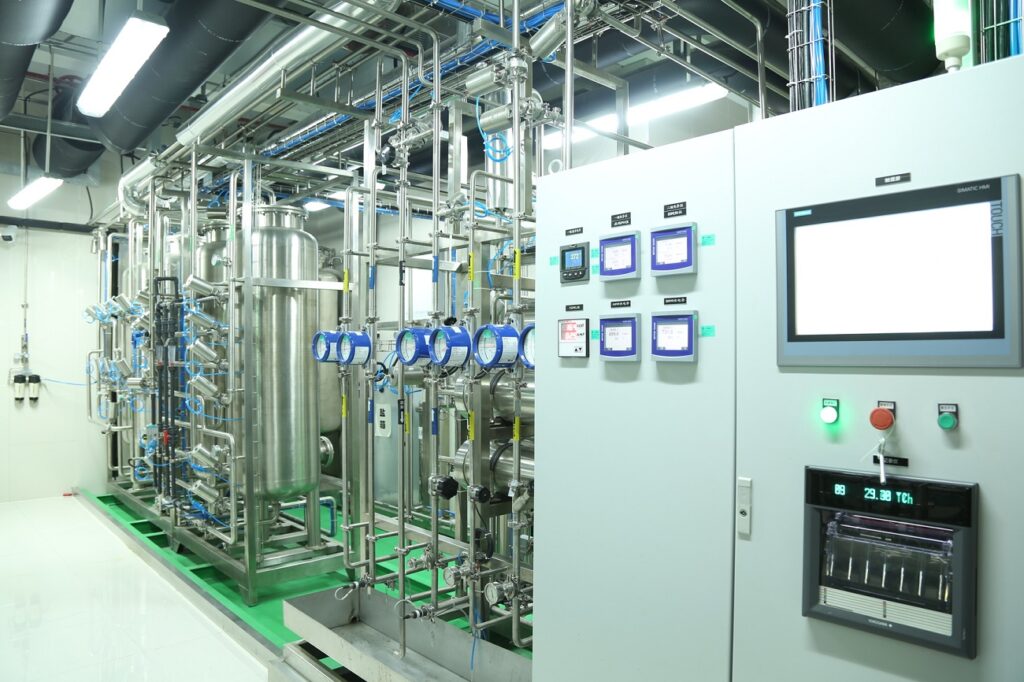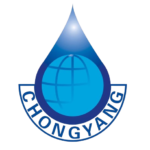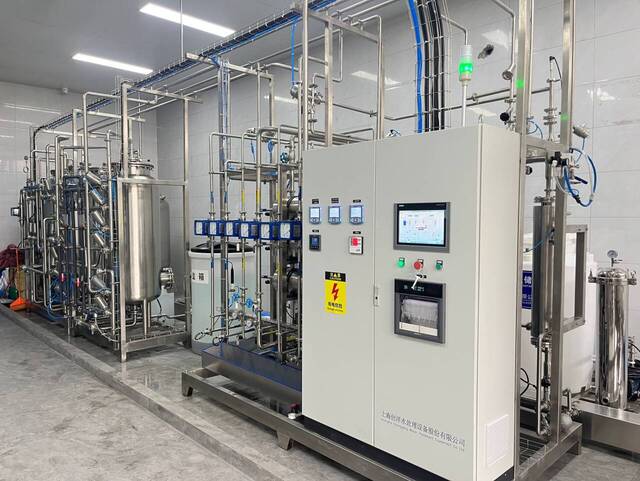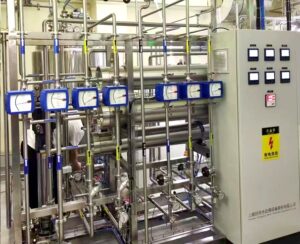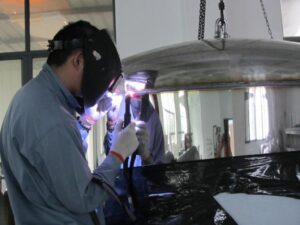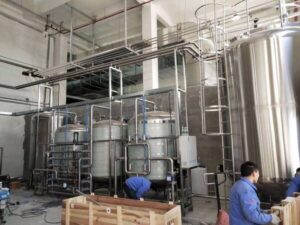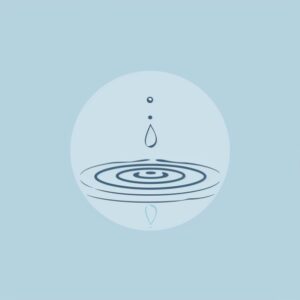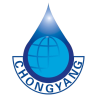A complete pharmaceutical water treatment system typically comprises several key components, each playing a crucial role in ensuring the production of high-purity water. Here are the main parts:
Each part of the pharmaceutical water treatment system is designed to work together to produce, store, and distribute high-purity water that meets the stringent requirements of pharmaceutical production.
1. Pretreatment System
The pretreatment system is the first stage in a pharmaceutical water treatment system. It includes components like multimedia filters, activated carbon filters, and water softeners. These elements work together to remove larger contaminants, chlorine, and hardness from the incoming water, preparing it for further purification.
2. Reverse Osmosis (RO) System
The Reverse Osmosis (RO) system is the core of the water purification process. It removes dissolved solids, ions, and other impurities from the water, producing purified water that meets the standards required for pharmaceutical use.
3. Electrodeionization (EDI) Unit
The Electrodeionization (EDI) unit is typically used after the RO system. It further polishes the water by removing any remaining ions, achieving extremely high purity levels necessary for pharmaceutical applications.
4. Ultraviolet (UV) Sterilizer
The Ultraviolet (UV) sterilizer plays a crucial role in microbial control. It uses UV light to kill bacteria and other microorganisms in the water, ensuring that the water remains sterile and free from biological contaminants.
5. Ultrafiltration (UF) System
The Ultrafiltration (UF) system is used to remove endotoxins, bacteria, and other fine particulates. It is particularly important in Water for Injection (WFI) systems, where the highest purity levels are required.
6. Storage and Distribution System
The storage and distribution system includes storage tanks, pumps, and a distribution loop. This system is designed to deliver purified water throughout the facility while maintaining its quality until it is used in production processes.
7. CIP (Clean In Place) System
The Clean In Place (CIP) system is integrated into the water treatment system to periodically clean and sanitize all components. This ensures hygiene and prevents contamination, maintaining the system’s integrity.
8. Monitoring and Control System
The monitoring and control system is an automated system that oversees the entire water treatment process. It monitors key parameters like flow rate, pressure, conductivity, and microbial levels, ensuring consistent water quality and compliance with regulatory standards.
Each of these components is essential to producing, storing, and distributing high-purity water in pharmaceutical production environments.
